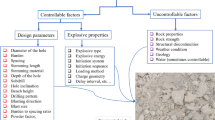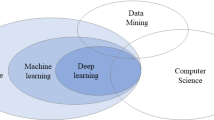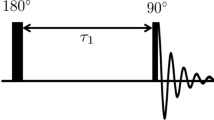Abstract
Shale gas, as a kind of unconventional resources, plays an important role in meeting global energy demands and is expected to do so for decades as human society is moving toward low-carbon energies. During the energy transition, the rapid growth of shale gas helps to maintain the security of supply and lower prices of energies for consumers. The organic matters contained in shale are the physical basis for the production of shale gas, and the large number of pores and fractures in shale provide storage space for shale gas. Therefore, shale rocks are both source rocks for gas generation and reservoirs for gathering and preserving gas. Accurate characterization and modeling of the internal spatial structure of shale is of great significance for the exploitation of shale gas. However, as shale contains a variety of minerals and organic matters, and the scales of pores and fractures vary widely, using conventional numerical methods to characterize and reconstruct the internal structures of shale is challenging. When reconstructing some larger results with high resolutions, the contradiction between the limited field of view (FOV) and the resolution of training images becomes more acute. With the development of deep learning and one of its variants, generative adversarial network (GAN), the reconstruction of shale may benefit from their strong learning and generation abilities. In this paper, a model of GAN combined with residual networks (3DRGAN) is proposed to reconstruct 3D digital cores of shale. The super-resolution image that is much bigger than training images is obtained, solving the contradiction between FOV and the resolution of training images. Compared to some typical methods, the results reconstructed by 3DRGAN are closer to the real shale sample, showing its favorable advantage.






























Similar content being viewed by others
Code Availability
Computer codes and data are freely available from GitHub repository https://github.com/Hugsazp/3DRGAN. Name of code: 3DRGAN. Developer and contact information: Guangshun Hu (hugs_2000@163.com).
References
Arjovsky, M., Chintala, S., Bottou, L.: Wasserstein GAN. In: Proceedings of the 34th International Conference on Machine Learning (PMLR). 70, 214–223 (2017)
Bray, J.M., Lauchnor, E.G., Redden, G.D., Gerlach, R., Fujita, Y., Codd, S.L., Seymour, J.D.: Impact of mineral precipitation on flow and mixing in porous media determined by microcomputed tomography and MRI. Environ. Sci. Technol. 51(3), 1562–1569 (2017)
Costanza, R.M.S., Estabrook, B.D., Fouhey, D.F.: Representative elementary volume estimation for porosity, moisture saturation, and air-water interfacial areas in unsaturated porous media: data quality implications. Water Res. Res. (2011). https://doi.org/10.1029/2010WR009655
Deutsch, C.V., Journel, A.G.: The application of simulated annealing to stochastic reservoir modeling. SPE Adv. Technol. Ser. 2(02), 222–227 (1994)
Dong, H., Blunt, M.J.: Pore-network extraction from micro-computerized tomography images. Phys. Rev. E Stat. Nonlinear Soft Matter. Phys. 80, 36307 (2009)
Dong, C., Loy, C.C., He, K., Tang, X.: Image super-resolution using deep convolutional networks. IEEE Trans. Pattern Anal. Mach. Intell. 38(2), 295–307 (2016)
Dong, C., Loy, C.C., He, K., Tang, X.: Learning a deep convolutional network for image super-resolution. In: European Conference on Computer Vision. 184–199 (2014)
Fei, C.: Avizo User’s Guide, 9th edn. FEI, USA (2015)
Feng, J., He, X., Teng, Q., Ren, C., Chen, H., Li, Y.: Accurate and fast reconstruction of porous media from extremely limited information using conditional generative adversarial network. Phys. Rev. E 100(3), 33308 (2019)
Goodfellow, I.J., Pouget-Abadie, J., Mirza, M., Xu, B., Warde-Farley, D., Ozair, S., Courville, A., Bengio, Y.: Generative adversarial nets. Adv. Neural. Inf. Process. Syst. 3, 2672–2680 (2014)
Gulrajani, I., Ahmed, F., Arjovsky, M., Dumoulin, V., Courville, A.C.: Improved training of Wasserstein GANs. Adv. Neural Inf. Process. Syst. 30, 5769–5779 (2017)
Guo, T.: Evaluation of highly thermally mature shale-gas reservoirs in complex structural parts of the Sichuan Basin. Earth Sci. 24, 863–873 (2013)
Hammonds, K., Baker, I.: Quantifying damage in polycrystalline ice via X-ray computed micro-tomography. Acta Mater. 127, 463–470 (2017)
He, K.M., Zhang, X.Y., Ren, S.Q., Sun, J.: Deep residual learning for image recognition. In: Proceedings of IEEE International Conference on Computer Vision and Pattern Recognition, pp. 770–778 (2016)
Hidajat, I., Rastogi, A., Singh, M., Mohanty, K.K.: Transport properties of Porous media from thin-sections. Paper Present. SPE Latin Am. Caribb. Petrol. Eng. Conf. (2001). https://doi.org/10.2118/69623-MS
Johnson, J., Alahi, A., Li, F.: Perceptual losses for real-time style transfer and super- resolution. In European Conference on Computer Vision (ECCV), pp. 694–711 (2016)
Kim, J., Lee, J.K., Lee, K.M.: Accurate image super-resolution using very deep convolutional networks. In: Proceedings of 2016 IEEE Conference on Computer Vision and Pattern Recognition (CVPR), pp. 1646–1654 (2016)
Krishnan, T., Journel, A.G.: Spatial connectivity: from variograms to multiple-point measures. Math. Geol. 35, 915–925 (2003)
Ledig, C., Theis, L., Huszar, F., Caballero,J., Cunningham, A., Acosta, A., Aitken, A., Tejani, A., Totz, A., Wang, Z., Shi, W.: Photo realistic single image super-resolution using a generative adversarial network. In: Proceedings of 2017 IEEE Conference on Computer Vision and Pattern Recognition (CVPR), pp. 4681–4690 (2017)
Legland, D., Arganda-Carreras, I., Andrey, P.: MorphoLibJ: integrated library and plugins for mathematical morphology with ImageJ. Bioinformatics 32(22), 3532–3534 (2016)
Li, Z., Teng, Q., He, X., Yue, G., Wang, Z.: Sparse representation-based volumetric super-resolution algorithm for 3d ct images of reservoir rocks. J. Appl. Geophys. 144, 69–77 (2017)
Middleton, R.S., Gupta, R., Hyman, J.D., Viswanathan, H.S.: The shale gas revolution: barriers, sustainability, and emerging opportunities. Appl. Energy 199, 88–95 (2017)
Mosser, L., Dubrule, O., Blunt, M.J.: Reconstruction of three-dimensional porous media using generative adversarial neural networks. Phys. Rev. E 96(4), 043309 (2017)
Niu, Y.F., Wang, Y.D., Mostaghimi, P., Swietojanski, P., Armstrong, R.T.: An innovative application of generative adversarial networks for physically accurate rock images with an unprecedented field of view. Geophys. Res. Lett. (2020). https://doi.org/10.1029/2020GL089029
Okabe, H., Blunt, M.J.: Prediction of permeability for porous media reconstructed using multiple-point statistics. Phys. Rev. e. 70, 066135 (2004)
Okabe, H., Blunt, M.J.: Pore space reconstruction using multiple-point statistics. J. Petrol. Sci. Eng. 46(1–2), 121–137 (2005)
Otsu, N.: A threshold selection method from gray-level histograms. IEEE Trans. Syst. Man Cybern. 9(1), 62–66 (1979)
Radford, A., Metz, L., Chintala, S.: Unsupervised representation learning with deep convolutional generative adversarial networks. (2015). https://doi.org/10.48550/arXiv.1511.06434
Song, S., Mukerji, T., Hou, J.: GANSim: Conditional facies simulation using an improved progressive growing of Generative Adversarial Networks (GANs). Math. Geosci. 53(7), 1413–1444 (2021)
Strebelle, S.: Conditional simulation of complex geological structures using multiple point statistics. Math. Geol. 34, 1–21 (2002)
Tahmasebi, P., Javadpour, F., Sahimi, M.: Three-dimensional stochastic characterization of shale SEM images. Transp Porous Med. 110, 521–531 (2015)
Tahmasebi, P., Javadpour, F., Sahimi, M.: Stochastic shale permeability matching: three-dimensional characterization and modeling. Int. J. Coal Geol. 165, 231–242 (2016)
Valsecchi, A., Damas, S., Tubilleja, C., Arechalde, J.: Stochastic reconstruction of 3D porous media from 2D images using generative adversarial networks. Neurocomputing 399, 227–236 (2020)
Volkhonskiy, D., Muravleva, E., Sudakov, O., Orlov, D., Burnaev, E., Koroteev, D., Belozerov, B., Krutko, V.: Reconstruction of 3D Porous Media from 2D Slices. (2021) https://doi.org/10.48550/arXiv.1901.10233
Wang, Y., Yuan, Y., Rahman, S.S., Arns, C.: Semi-quantitative multiscale modelling and flow simulation in a nanoscale porous system of shale. Fuel 234, 1181–1192 (2018)
Wang, Y.D., Blunt, M.J., Armstrong, R.T., Mostaghimi, P.: Deep learning in pore scale imaging and modeling. Earth Sci. Rev. 215, 103555 (2021)
Zhang, T., Du, Y., Huang, T., Li, X.: GPU-accelerated 3D reconstruction of porous media using multiple-point statistics. Comput. Geosci. 19(1), 79–98 (2015)
Zhang, T., Du, Y., Huang, T., Yang, J., Lu, F., Li, X.: Reconstruction of porous media using ISOMAP-based MPS. Stoch. Environ. Res. Risk Assess. 30, 395–412 (2016)
Zhang, T., Li, D.Y., Lu, F.F.: A pore space reconstruction method of shale based on autoencoders and generative adversarial networks. Comput. Geosci. 25, 2149–2165 (2021)
Zhu, F.Y., Wang, Q.Q., Zhang, X.S., Hu, W., Zhao, X., Zhang, H.X.: 3D nanostructure reconstruction based on the SEM imaging principle, and applications. Nanotechnology 25(18), 185705 (2014)
Funding
This work is supported by the National Natural Science Foundation of China (Nos. 41672114, 41702148).
Author information
Authors and Affiliations
Corresponding author
Ethics declarations
Conflict of interest
The authors declare that they have no conflict of interest.
Additional information
Publisher's Note
Springer Nature remains neutral with regard to jurisdictional claims in published maps and institutional affiliations.
Rights and permissions
Springer Nature or its licensor (e.g. a society or other partner) holds exclusive rights to this article under a publishing agreement with the author(s) or other rightsholder(s); author self-archiving of the accepted manuscript version of this article is solely governed by the terms of such publishing agreement and applicable law.
About this article
Cite this article
Zhang, T., Hu, G., Yang, Y. et al. A Super-Resolution Reconstruction Method for Shale Based on Generative Adversarial Network. Transp Porous Med 150, 383–426 (2023). https://doi.org/10.1007/s11242-023-02016-1
Received:
Accepted:
Published:
Issue Date:
DOI: https://doi.org/10.1007/s11242-023-02016-1




